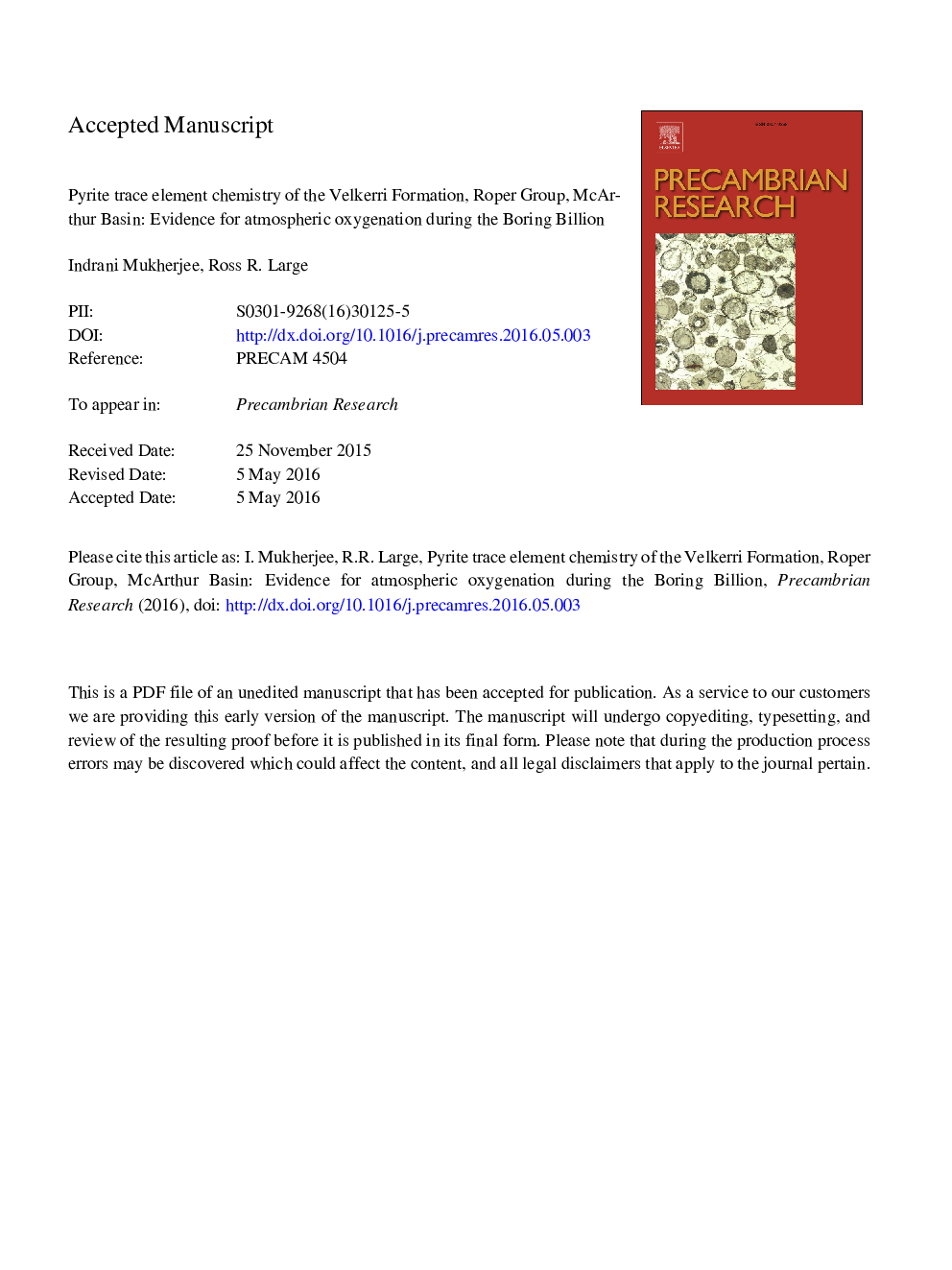| Article ID | Journal | Published Year | Pages | File Type |
|---|---|---|---|---|
| 6442111 | Precambrian Research | 2016 | 37 Pages |
Abstract
Our results suggest that the black shales of the Velkerri Formation deposited under different geochemical conditions in comparison to the underlying Corcoran Formation. This proportionate difference is manifested in the form of high total organic carbon (TOC) contents coupled with an increase of trace elements such as P, Mo, Cd, Se, Ni, Se/Co, Ni/Co in the mudstones of Upper Velkerri Formation in comparison to Lower Velkerri and underlying Corcoran Formation. Cobalt on the other hand, exhibits an opposite trend compared to other redox sensitive trace elements (Mo, Se) due to its unique redox chemistry, particularly the cationic nature of its soluble species making Se/Co a useful proxy for redox conditions of the atmosphere. This progressive increment in trace elements (P, Mo, Cd, Se, Ni, Se/Co, Ni/Co) up stratigraphy from Corcoran Formation to Lower Velkerri Formation to Upper Velkerri is herein attributed to an increase in nutrient trace element supply into the marine reservoir, possibly in response to tectonic activity and an increase in oxygen in the atmosphere. This increased nutrient supply subsequently promoted an increase in primary productivity as indicated by high TOC contents in the Upper Velkerri Formation. This positive change in nutrient supply also coincides with an increased supply of sulphate to the ocean (modelled paleo-seawater [SO42â]) as evidenced by previous sulphur isotope studies and development of morphological complexity in eukaryotes based on paleontological observations of previous workers. The totality of evidence from this study and previous studies, suggest that there was a possible oxygenation event around â¼1400Â Ma. This is in contrast with the general notion that Mesoproterozoic oxygen levels were low and devoid of significant fluctuations.
Related Topics
Physical Sciences and Engineering
Earth and Planetary Sciences
Geochemistry and Petrology
Authors
Indrani Mukherjee, Ross R. Large,
